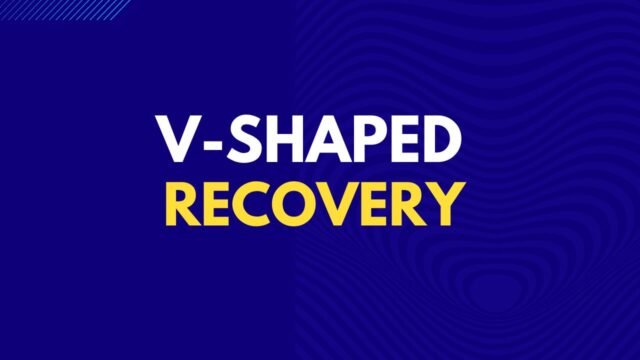
What is V-shaped Recovery
A V-shaped recovery is when an economy rebounds quickly after a sharp decline. The name comes from the shape of the resulting economic graph, which looks like a “V.” A V-shaped recovery is the best case scenario for an economy that has experienced a downturn. Following a sharp decline, economic activity will rebound quickly and return to its previous level. While a V-shaped recovery is ideal, it is not always realistic. In some cases, an economy may take longer to rebound or may not return to its previous level of activity. However, a V-shaped recovery is still the goal for most economies that have experienced a recession or other economic setback.
The benefits of V-shaped Recovery
A V-shaped recovery is when an economy rebound very quickly after a sharp decline. A V-shaped recovery is the best case scenario and it’s what most central banks and economists hope for when there’s an economic downturn.
There are many benefits of a V-shaped recovery. One benefit is that it creates jobs quickly. When an economy rebounds quickly, businesses start to expand again and they need to hire more workers. This increases employment and helps to reduce unemployment.
Another benefit of a V-shaped recovery is that it boosts consumer confidence. When the economy is doing well, people feel good about their personal finances and they’re more likely to spend money. This increase in consumer spending helps to drive economic growth.
A V-shaped recovery is also good for businesses because it leads to higher profits. When the economy is growing, businesses make more sales and they can increase their prices. This increase in revenue helps businesses to invest in new products, hire more workers, and grow their business.
Lastly, a V-shaped recovery is good for government finances. When the economy is doing well, the government collects more tax revenue. This extra tax revenue can be used to invest in infrastructure and education.
How to achieve V-shaped Recovery
Achieving a V-shaped recovery is the goal of many businesses and organizations. This type of recovery refers to the quick bouncing back after a setback or decline. To achieve this, there are a few key steps that need to be taken. First, it is important to identify the root cause of the problem. Once this is done, measures can be put in place to prevent it from happening again.
Second, a plan needs to be put in place for how to quickly and effectively bounce back from the setback. This may include putting emergency procedures in place or increasing production levels. Finally, it is important to communicate the plan to all members of the organization so that everyone is on board and knows what needs to be done. By taking these steps, businesses and organizations can increase their chances of achieving a V-shaped recovery.
The challenges of V-shaped Recovery
One of the biggest challenges of a V-shaped recovery is that it can be difficult to achieve without significant government intervention. In many cases, businesses will be reluctant to invest and hire new workers until they see clear signs of economic recovery. This can delay the rebound and prolong the period of economic decline. Additionally, a V-shaped recovery can put pressure on already strained government budgets, as stimulus spending may be required to jumpstart the economy.
Another challenge of a V-shaped recovery is that it often leads to inflationary pressures. As businesses ramp up production to meet pent-up demand, they may raise prices in order to increase profits. This can lead to higher costs of living for consumers and erode any gains made during the initial rebound. Policy-makers must be careful to avoid making decisions that could inadvertently lead to inflationary pressures.
Real-life examples of V-shaped Recovery
The V-shaped recovery is a economic theory that posits that after a sharp downturn, there will be a quick and robust rebound. The theory is based on the shape of the letter “V,” with the downturn represented by the left side of the letter and the rebound represented by the right side. While the V-shaped recovery is often used as a predictive tool by economists, there are also several real-life examples of economies that have followed this pattern. One notable example is the U.S. economy following the recession of 2008. After several quarters of decline, there was a sharp rebound in economic activity, leading to several years of robust growth.
Another example comes from Japan following its “Lost Decade” of the 1990s. After years of stagnation, the Japanese economy experienced a period of strong growth in the 2000s. While not all economic downturns result in a V-shaped recovery, these examples show that it is possible for an economy to experience a quick and significant rebound after a period of decline.
The future of V-shaped Recovery
The current COVID-19 pandemic has resulted in widespread economic devastation, with businesses of all types shutting down temporarily or permanently. However, there is reason to believe that the worst may be over. Many countries are starting to see a decrease in new cases, and some are even beginning to lift restrictions.
This has led to a growing belief in a “V-shaped” recovery, where the economy quickly bounces back after a sharp decline. While it is still too early to say for sure, the positive trend is certainly encouraging. If the V-shaped recovery does occur, it will be thanks in part to the quick and decisive actions taken by governments and businesses around the world. Only time will tell if this optimistic forecast comes true, but for now, there is reason to hope.


































